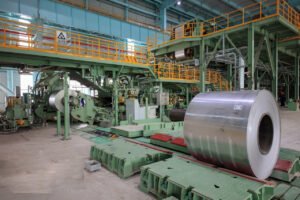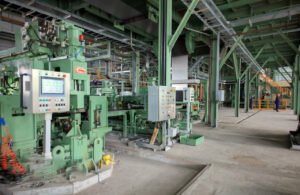ISO 9001 и 14001: почему сертификация важна для поставщиков листов из нержавеющей стали
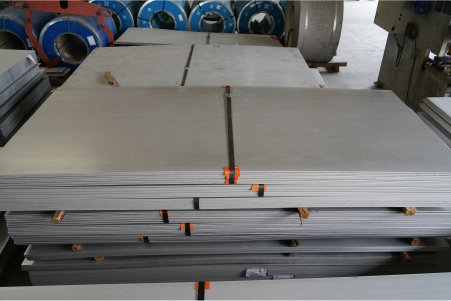
Struggling to find stainless steel sheet suppliers who consistently deliver on their promises of quality and reliability? You’re not alone. Choosing the wrong partner can lead to project delays, material failures, and reputational damage, turning a simple procurement into a major liability. The solution lies in prioritizing suppliers with internationally recognized ISO 9001 and ISO 140011 certifications.
ISO 9001 and 14001 certifications are crucial for stainless steel sheet suppliers as they validate a commitment to quality and environmental responsibility. ISO 9001 ensures a robust Quality Management System for consistent product excellence, while ISO 14001 demonstrates an effective Environmental Management System for sustainable operations.
These certifications are far more than just framed certificates on a wall; they are a reflection of a supplier's core operational philosophy. For any serious buyer, from a large-scale construction contractor to a precision manufacturing firm, these standards are a non-negotiable benchmark. They provide a transparent, third-party verified assurance that your supplier has the processes in place to manage quality control, handle environmental responsibilities, and drive continuous improvement. This isn't just about compliance—it's about building a resilient and trustworthy supply chain.
But are these standards simply a bureaucratic exercise, or do they offer tangible value that impacts your bottom line? I've seen both sides in my years in the industry. Some view certification as a costly hurdle. However, from my perspective as the Global Business Director at MFY, I can attest that embedding these standards into our DNA has been transformative. A study by the Harvard Business School2 found that ISO 9001 adopters experience higher rates of corporate survival, sales, and employment growth. Similarly, ISO 14001 implementation correlates with improved resource efficiency and enhanced brand image. It’s a strategic investment in resilience, quality, and trust that separates the industry leaders from the rest. Let's explore why this matters so profoundly.
What is the history and significance of ISO 9001 and 14001 certifications?
Are you find the myriad of industry standards confusing and overwhelming? Overlooking the origins of ISO 9001 and 14001 means you might fail to grasp their true significance, potentially compromising your projects by choosing partners who don't meet these foundational benchmarks for quality and environmental stewardship.
ISO 9001, first published in 1987, originated from military and industrial quality assurance standards to create a universal framework for quality management. ISO 14001, established in 1996, emerged from a growing global environmental consciousness to provide a system for managing and improving environmental performance.
These certifications were not created in a vacuum; they were forged in response to critical global needs. In the early days of my career, international trade was often hampered by a patchwork of disparate national standards. A product deemed high-quality in one country might fail inspection in another, creating friction, waste, and mistrust. The International Organization for Standardization (ISO3) stepped in to create a common language for quality and, later, for environmental management. This history is vital because it shows that these standards are fundamentally about enabling smoother, more reliable global commerce. They are designed to build bridges of trust between suppliers like MFY and clients like you, no matter where you are in the world. Their significance today is a direct legacy of this mission: to ensure that when you specify a certain grade of stainless steel sheet, you receive exactly that, produced reliably and responsibly every single time. It's a promise backed by a globally respected system of verification and continuous improvement.

The journey of these standards is a story of industrial evolution. Understanding their development reveals why they have become the bedrock of modern manufacturing and supply chain management. They represent a global consensus on what constitutes "good practice," providing a clear framework for excellence that benefits both the supplier and the customer. For us at MFY, adopting these standards wasn't just about meeting a requirement; it was about embracing a philosophy of continuous improvement that touches every aspect of our business, from raw material sourcing to final delivery. This commitment is what allows us to serve demanding markets in India, Southeast Asia, and the Middle East with confidence.
The Genesis of ISO 9001: From Military Standards to Global Quality Benchmark
The DNA of ISO 9001 can be traced back to post-WWII military procurement. Governments needed to ensure that complex equipment, from tanks to aircraft, was built with unfailing consistency. This led to standards like the U.S. Department of Defense's MIL-Q-9858A in 1959. These early standards focused heavily on final inspection, but they laid the groundwork for a more proactive approach to quality. This philosophy migrated to other critical industries and eventually led to the creation of BS 5750 in the UK in 1979, which became the blueprint for the first international quality standard, ISO 9001:1987.
The initial version was quite prescriptive, but the standard has evolved significantly. The landmark 2000 revision introduced the "process approach," shifting the focus from simply following procedures to managing interrelated processes to achieve desired outcomes. At MFY, this was a game-changer. We redesigned our stainless steel sheet production line as a cohesive system, mapping every step from coil slitting to surface finishing. By analyzing the interactions between these steps, we identified and eliminated bottlenecks, reducing our internal defect rate by over 12% in the first year alone.
The most recent version, ISO 9001:2015, brought another critical evolution: risk-based thinking. This requires us to proactively identify and mitigate risks throughout our operations. For a client in the automotive sector, this means we don't just inspect the final product; we assess risks in our supply chain, production equipment, and logistics to prevent issues before they happen. This shift from reactive quality control to proactive quality assurance is the core significance of the modern ISO 9001 standard.
ISO 14001: A Response to Growing Environmental Consciousness
While ISO 9001 was born from industrial necessity, ISO 14001 was born from a collective global conscience. The 1980s and early 1990s saw a surge in public awareness of environmental issues, culminating in events like the 1992 Rio Earth Summit. Industries were increasingly seen not just as engines of economic growth but also as major environmental actors. There was a pressing need for a standardized way for organizations to manage their environmental responsibilities.
ISO 14001, first published in 1996, provided that framework. Its core is the Plan-Do-Check-Act (PDCA) cycle, a dynamic model for continuous improvement. It doesn't prescribe specific environmental performance targets but requires an organization to set its own objectives and establish a management system to achieve them. For example, when MFY implemented ISO 14001, we set an objective to reduce water consumption in our cold-rolling facilities. Following the PDCA cycle, we 'Planned' by auditing our water usage, 'Did' by investing in a closed-loop water recycling system, 'Checked' by monitoring consumption data (which showed a 28% reduction), and 'Acted' by making the new system a permanent standard operating procedure.
This process has tangible benefits. Not only did we reduce our environmental footprint, but the cost savings from reduced water and wastewater treatment expenses were passed on to our clients through more competitive pricing. This demonstrates that environmental responsibility and commercial viability are not mutually exclusive; in fact, ISO 14001 shows they can be mutually reinforcing.
The Symbiotic Relationship and Broader Significance
ISO 9001 and ISO 14001 are often implemented together as part of an Integrated Management System (IMS), and for good reason. They are built on a similar structure (the High-Level Structure, or HLS) and share common principles, such as top management commitment, a focus on context and stakeholders, and the PDCA cycle. A robust Quality Management System (QMS) naturally supports a good Environmental Management System (EMS), and vice versa. For instance, reducing waste and rework (a quality objective) directly contributes to resource efficiency (an environmental objective).
Their combined significance extends far beyond the factory gates. For a construction contractor building a LEED-certified skyscraper in the Middle East, using steel from an ISO 14001 certified supplier like MFY can contribute to project credits. For a manufacturer of medical devices, the rigorous documentation and traceability required by ISO 9001 are non-negotiable. These certifications become part of a client's own risk management and brand strategy. The table below illustrates how the two standards, while distinct, share a common framework that drives holistic business excellence.
| Shared Clause/Concept (ISO 2015 HLS) | ISO 9001 (Quality) Focus | ISO 14001 (Environmental) Focus |
|---|---|---|
| 4. Context of the Organization | Understanding internal/external issues affecting ability to provide conforming products/services. | Understanding internal/external issues affecting environmental performance. |
| 5. Leadership | Top management demonstrates commitment to the QMS and customer focus. | Top management demonstrates commitment to the EMS and environmental protection. |
| 6. Planning | Addressing risks and opportunities to ensure the QMS achieves its intended results. | Addressing risks and opportunities related to environmental aspects and compliance obligations. |
| 7. Support | Providing resources (people, infrastructure, knowledge) needed for the QMS. | Providing resources needed for the EMS. |
| 8. Operation | Planning and controlling the processes needed to meet product/service requirements. | Planning and controlling processes related to significant environmental aspects. |
| 9. Performance Evaluation | Monitoring, measuring, analyzing, and evaluating QMS performance and customer satisfaction. | Monitoring, measuring,analyzing, and evaluating environmental performance. |
| 10. Improvement | Continually improving the suitability, adequacy, and effectiveness of the QMS. | Continually improving the suitability, adequacy, and effectiveness of the EMS. |
Ultimately, the history and significance of these standards are about building trust. They provide a universal language that assures a client in India, a contractor in Russia, or an integrator in Southeast Asia that a supplier in China like MFY operates according to world-class principles of quality and environmental care.
ISO 9001 ensures quality managementПравда
ISO 9001 certification validates that a supplier has implemented a robust Quality Management System to ensure consistent product excellence.
ISO 14001 is only about complianceЛожь
ISO 14001 goes beyond mere compliance; it's a strategic framework for continuous environmental improvement that can lead to cost savings and operational efficiencies.
How do ISO 9001 and 14001 certifications influence the current market for stainless steel sheet suppliers?
Is your supplier selection process leaving too much to chance? In today's competitive market, choosing a non-certified stainless steel supplier is a high-stakes gamble, exposing your projects to quality inconsistencies and potential regulatory non-compliance. ISO certifications are the market's primary filter for identifying truly reliable partners.
ISO 9001 and 14001 certifications heavily influence the market by acting as essential entry tickets to high-value global supply chains. They function as key differentiators, signaling reliability, quality assurance, and environmental responsibility, which directly impacts purchasing decisions and a supplier's market access.
This influence is something I witness daily. A few years ago, MFY was bidding for a contract to supply stainless steel sheets for a major desalination plant in the Middle East4. The project's engineering, procurement, and construction (EPC) contractor had a stringent pre-qualification process. The very first line on their supplier checklist was "Current ISO 9001 and ISO 14001 certification." It wasn't listed under 'preferences'; it was a mandatory gateway. Without those certificates, our technical specifications and competitive pricing would never have even been considered. This experience was a powerful reminder that in the modern global marketplace, these certifications are not just about internal process improvement. They are a powerful commercial tool that fundamentally shapes market dynamics. They dictate who gets to compete for the most significant projects and who is relegated to the sidelines. For clients, this simplifies the procurement process, creating a clear dividing line between suppliers who have proven their commitment to global standards and those who have not.
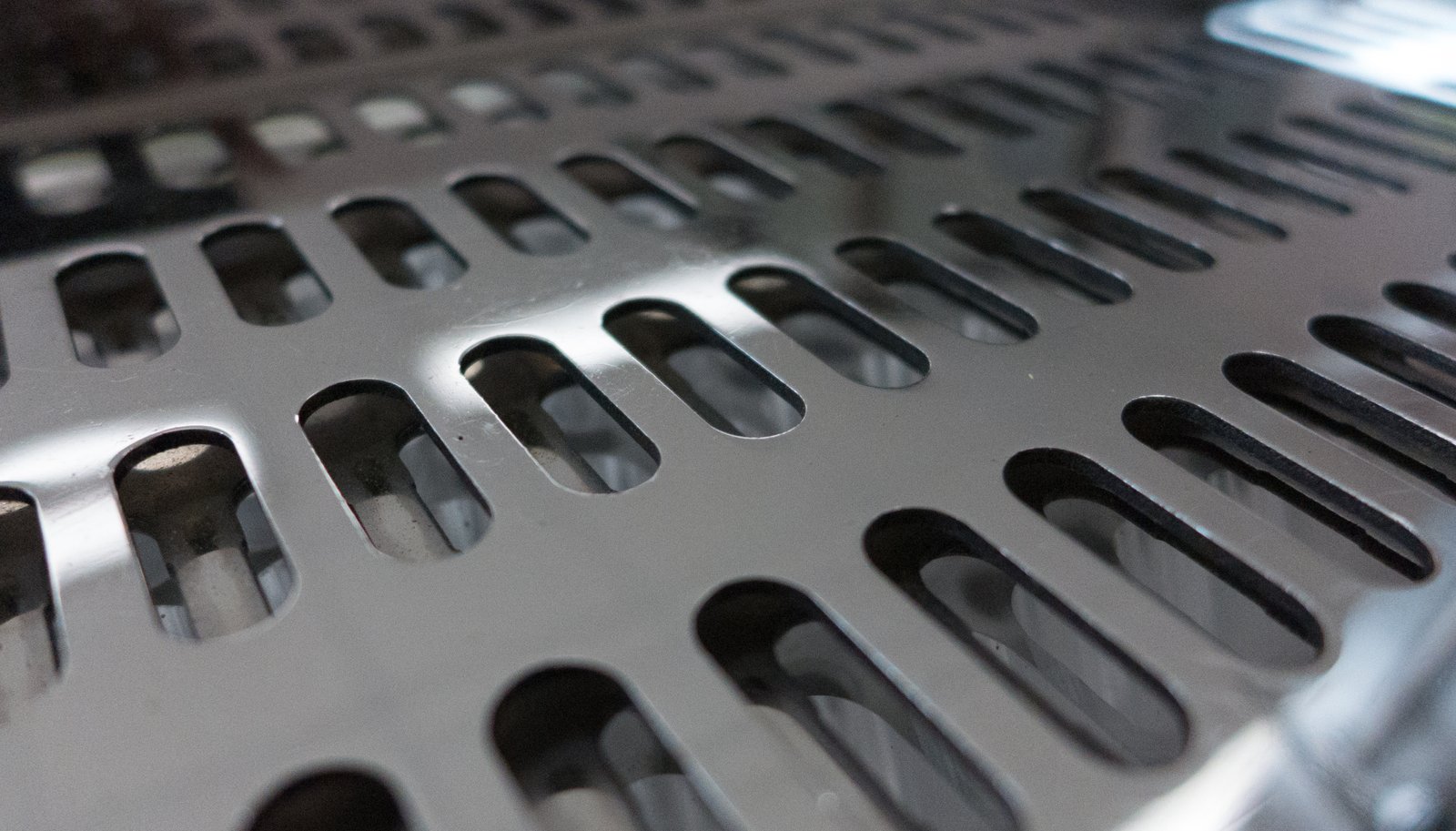
The market's reliance on these certifications has created a clear hierarchy among suppliers. Those who invest in certification position themselves as premium, reliable partners capable of meeting the complex demands of top-tier clients. This isn't just about winning a single tender; it's about building long-term relationships based on a foundation of trust and proven capability. For manufacturing companies, EPC contractors, and distributors, aligning with a certified supplier like MFY is a strategic move to de-risk their own operations and enhance the quality of their final product. This market reality forces suppliers to decide: either invest in the systems and processes required for certification or be content with a smaller, more volatile segment of the market that doesn't prioritize quality and sustainability.
Certification as a Gateway to Global Tenders and High-Value Projects
In the world of large-scale projects, risk management is paramount. Government bodies and multinational corporations cannot afford material failures or supply chain disruptions. As a result, they use ISO certifications as a primary tool for vetting suppliers. I recall working with an EPC contractor for a new airport terminal in Southeast Asia. Their procurement policy explicitly stated that all primary material suppliers must be ISO 9001 certified to ensure traceability and quality consistency across the thousands of stainless steel sheets required. Furthermore, because the project was seeking a high sustainability rating, ISO 14001 was also mandatory to demonstrate a commitment to environmentally responsible sourcing.
This is not an isolated case. Data from industry bodies confirms this trend. A report from the British Assessment Bureau indicated that 62% of businesses have won new business directly as a result of their ISO certification. For us at MFY, our certifications have been instrumental in getting us on the Approved Vendor Lists (AVLs) of major international firms. Being on an AVL means we are pre-qualified to bid, significantly shortening the sales cycle and giving us access to a pipeline of high-value projects that would otherwise be inaccessible. For a buyer, selecting from an AVL of certified suppliers provides immediate assurance that foundational quality and environmental checks have already been met.
The market influence is clear: no certification, no access. Suppliers without ISO 9001 and 14001 are effectively locked out of the most lucrative and stable segments of the global market, including public infrastructure, energy, aerospace, and high-end construction.
Shaping Customer Expectations and Pricing Structures
The widespread adoption of ISO standards has fundamentally shifted customer expectations. It's no longer enough to simply promise good quality. Clients now expect proof. They want to see the system behind the promise. They demand documentation, material test certificates (MTCs), traceability records, and evidence of environmental compliance. A client of ours who manufactures high-end kitchen appliances doesn't just need our 304-grade stainless steel sheets to have a perfect finish; they need to be able to trace that specific batch back to its raw material origins, a process mandated by our ISO 9001 system. This level of transparency is now the baseline expectation.
This shift naturally influences pricing. While a non-certified supplier might offer a lower upfront price, savvy customers understand the concept of Total Cost of Ownership (TCO). The slightly higher initial cost of a certified product is an insurance policy against an array of potential downstream costs: rework due to inconsistent material properties, project delays from failed inspections, legal liability from non-compliance, and brand damage from being associated with unsustainable practices. At MFY, we position our pricing not just on the per-ton cost of steel, but on the value of the assurance we provide. Our ISO certifications are a key part of that value proposition, justifying a price that reflects reliability and lower overall risk for the client.
In essence, the market now has a two-tiered structure. There's a price-driven commodity market, often served by non-certified suppliers, and a value-driven solutions market, dominated by certified suppliers who compete on quality, reliability, and risk reduction.
Driving Supply Chain Integration and Transparency
ISO standards create a ripple effect that enhances the integrity of the entire supply chain. A key requirement of both ISO 9001 (Clause 8.4) and ISO 14001 is the control of externally provided processes, products, and services. This means that for MFY to maintain our certification, we are required to evaluate and manage our own suppliers of raw materials, logistics, and even calibration services. We can't simply accept a low-cost raw material supplier at face value; we must audit their quality controls and environmental practices to ensure they meet the standards we promise to our own customers.
This creates a chain of accountability. We demand high standards from our suppliers because our clients demand them from us. This fosters a more integrated and transparent ecosystem where quality and responsibility are cascaded down the line. The table below compares the market characteristics of certified versus non-certified suppliers, highlighting the profound influence of certification.
| Метрика | ISO Certified Supplier (e.g., MFY) | Non-Certified Supplier |
|---|---|---|
| Market Access | Eligible for global tenders, MNCs, and government projects. | Limited to local or less-regulated markets; excluded from high-value tenders. |
| Client Trust | High; based on third-party verified systems and proven processes. | Low; based on promises and reputation, which can be inconsistent. |
| Risk Profile (for Client) | Low; reduced risk of defects, delays, and compliance issues. | High; increased risk of material failure, rework, and supply chain disruptions. |
| Pricing Power | Can command a premium based on value, reliability, and risk mitigation. | Competes primarily on price, leading to lower margins and potential quality compromises. |
| Long-Term Viability | Strong; positioned as a strategic partner for growth. | Vulnerable; susceptible to market shifts towards higher quality and sustainability demands. |
Ultimately, ISO 9001 and 14001 act as a powerful market force. They reward suppliers who invest in robust systems and penalize those who don't, steering the entire industry toward a future that is more reliable, transparent, and sustainable. For any business that depends on stainless steel, aligning with this trend is not just good practice—it's a strategic necessity.
ISO certifications are mandatory for major projectsПравда
The text clearly states that ISO 9001 and 14001 are often mandatory requirements for bidding on large-scale projects like desalination plants and airport terminals.
Non-certified suppliers offer better pricingЛожь
While non-certified suppliers might offer lower upfront costs, certified suppliers provide better total cost of ownership through reduced risks and higher reliability.
What challenges do stainless steel sheet suppliers face without ISO 9001 and 14001 certification?
Are you concerned about being locked out of key markets? Operating without ISO 9001 and 14001 certification in today's global economy presents significant barriers, limiting your growth and exposing your business to severe operational and reputational risks that certified competitors easily avoid.
Without ISO 9001 and 14001 certifications, stainless steel sheet suppliers face major challenges including restricted market access, diminished customer trust, an inability to bid on high-value projects, and operational inefficiencies that lead to inconsistent quality and higher long-term costs.
These aren't hypothetical problems; they are tangible business realities that I've seen play out many times. I once consulted with a smaller, regional supplier who had excellent technical capabilities but had never pursued certification. They were consistently losing out on bids to larger, certified competitors, even when their prices were lower. The feedback was always the same: "We can't take the risk without third-party validation of your quality and environmental systems." This supplier was trapped in a cycle of competing only on price in a shrinking segment of the market. Their lack of certification became a ceiling on their growth, restricting their access5 to more profitable and stable partnerships. Their story is a common one, highlighting the critical commercial challenges that arise from being on the outside of this globally recognized framework of trust and quality.
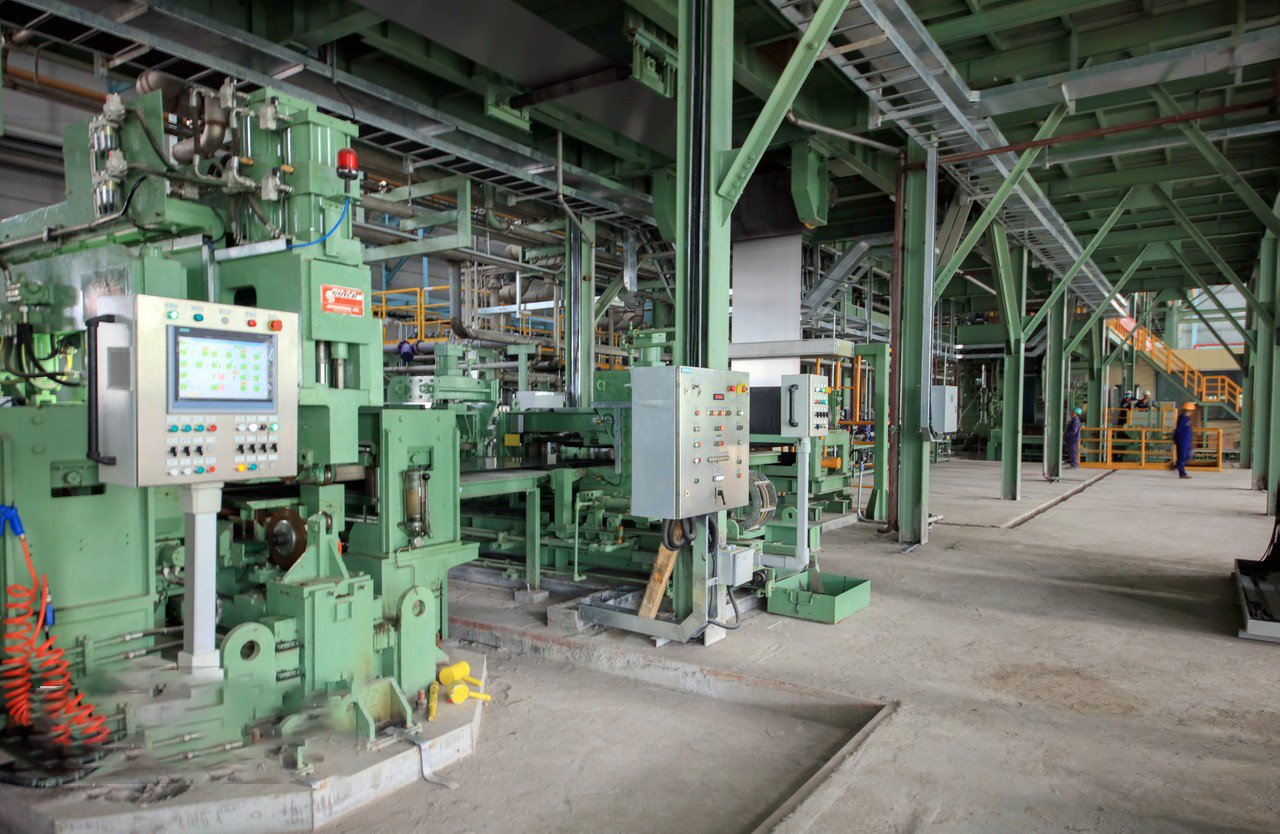
The challenges extend far beyond just missed opportunities. They permeate the very core of a supplier's operations. Without the structured framework of ISO 9001, processes are often ad-hoc and person-dependent. This leads to variability in product quality—one batch of stainless steel sheets might be perfect, while the next has surface defects or inconsistent thickness. This is a nightmare for clients in manufacturing or construction where precision is key. Similarly, without the discipline of ISO 14001, suppliers often miss opportunities for resource efficiency, leading to higher energy and water costs, more waste, and potential run-ins with ever-stricter environmental regulations. These internal weaknesses inevitably translate into external problems, damaging client relationships6 and the company's long-term reputation.
Inability to Compete and Severe Market Limitation
The most immediate and painful challenge for a non-certified supplier is market exclusion. As discussed, a vast and growing number of public and private sector tenders now mandate ISO 9001 and 14001 as prerequisites. A supplier without these certifications is automatically disqualified, regardless of their product quality or pricing. This effectively cuts them off from the most stable and profitable segments of the economy, including government infrastructure, aerospace, automotive, medical devices, and multinational construction projects. Their potential customer base shrinks dramatically.
I know of a very capable tube manufacturer in our region who couldn't bid on a lucrative contract for a new municipal water system. The project was funded by a development bank that required all suppliers in the chain to be ISO certified to ensure the longevity and safety of the public works. The manufacturer's lack of certification wasn't just a disadvantage; it was an impassable barrier. They were relegated to competing for smaller, private jobs with tighter margins and less stability.
This limitation also hampers international expansion. When MFY first targeted the Indian and Middle Eastern markets, ISO certifications were our passport7. They provided instant credibility in regions where we had no prior reputation. Without them, we would have been just another unknown foreign supplier, facing an uphill battle to prove our worth. Non-certified suppliers are often trapped within their domestic or regional markets, unable to tap into the immense potential of global trade.
Operational Inefficiencies and Inconsistent Quality
Beyond market access, the lack of an ISO 9001-based Quality Management System (QMS) breeds internal chaos. The standard's process approach and focus on continuous improvement force a company to systematize its operations. Without this framework, processes often rely on tribal knowledge held by a few key employees. When an experienced machine operator leaves, their unique method for ensuring a perfect surface finish on a stainless steel sheet might leave with them, leading to a sudden drop in quality that baffles management.
This inconsistency is poison to customer relationships. Imagine you are a contractor for a high-end architectural project. You order 100 sheets of brushed-finish stainless steel. The first 50 are flawless. The next 50 have visible variations in the brushing pattern. Now your project is delayed, costs are mounting, and your trust in that supplier is shattered. This is a common outcome when quality control is reactive (inspecting at the end) rather than proactive (built into the process), a core tenet of ISO 9001. A study by the "Journal of Operations Management" has shown that ISO 9001 implementation leads to significant improvements in operational performance, including lower defect rates and higher productivity, benefits that non-certified suppliers struggle to achieve systematically.
Furthermore, the lack of formal processes for corrective action means that when mistakes happen, they are likely to happen again. There is no structured "root cause analysis" to identify and eliminate the source of the problem. This leads to a cycle of firefighting, rework, and waste, all of which erode profitability and damage the supplier's reputation for reliability.
Increased Risk and Lack of Customer Trust
Ultimately, business is built on trust. ISO certifications are a powerful, internationally recognized proxy for trustworthiness. A supplier without them is asking customers to take a leap of faith. In a risk-averse world, fewer and fewer buyers are willing to make that jump. The certification acts as a third-party audit, assuring the client that the supplier has been independently verified to meet global standards. Without it, a supplier's claims about quality or environmental care are just that—claims.
This lack of trust manifests in several ways. Potential clients may demand more extensive and costly on-site audits before placing an order. They may impose stricter payment terms or require performance bonds, increasing the supplier's financial burden. For many buyers, it’s simply easier and safer to go with a certified competitor. A purchasing manager for a large manufacturing company once told me, "Why would I risk my project on an unknown quantity? With an ISO certified supplier like MFY, I know I'm getting a partner whose processes have been vetted. It's one less thing for me to worry about."
The following table starkly contrasts the operational reality for non-certified suppliers versus their certified counterparts, illustrating the systemic challenges they face.
| Operational Area | Non-Certified Supplier | ISO Certified Supplier (e.g., MFY) |
|---|---|---|
| Quality Control | Reactive, inspection-based. Inconsistent and person-dependent. | Proactive, process-based. Systematic and documented. |
| Process Management | Ad-hoc, informal. Prone to errors and rework. | Systematized, continuous improvement cycle (PDCA). |
| Risk Management | Informal and often overlooked. Vulnerable to disruptions. | Formalized, risk-based thinking integrated into all processes. |
| Проверка поставщиков | Inconsistent or based solely on price. | Systematic evaluation of suppliers for quality and compliance. |
| Customer Feedback | Handled case-by-case, no system for learning from errors. | Formal process for corrective action and continual improvement. |
A non-certified supplier is not just missing a certificate; they are operating with a fundamental strategic disadvantage. They face a smaller market, run less efficient operations, and struggle to build the deep, trust-based relationships that are essential for long-term success in the competitive stainless steel industry.
ISO certifications enable market accessПравда
Many high-value projects and international markets require ISO 9001/14001 certification as a prerequisite for bidding and participation.
Quality improves without ISO 9001Ложь
Without ISO 9001's systematic approach, quality becomes inconsistent and dependent on individual employees rather than standardized processes.
What strategies can suppliers use to obtain ISO 9001 and 14001 certifications?
Are you ready to elevate your business but unsure how to navigate the certification process? Achieving ISO 9001 and 14001 certification can seem daunting, but it's a manageable journey. With a clear, strategic approach, you can transform this challenge into a powerful catalyst for growth.
To obtain ISO 9001 and ISO 14001 certifications, suppliers should adopt a phased strategy: secure top management commitment, conduct a gap analysis against the standards, develop and implement a management system, perform internal audits, and finally, engage a recognized registrar for the formal certification audit.
I remember when MFY decided to pursue an integrated certification for both standards. The first and most crucial step was not writing procedures, but securing absolute buy-in from our entire leadership team. We had to agree that this was not a side project for the quality department, but a strategic business initiative. Our leadership committed the necessary resources—time, personnel, and budget—and communicated the importance of the goal to every employee. This top-down commitment creates the momentum needed to overcome the inevitable hurdles. From there, the path becomes a systematic project of assessment, implementation, and refinement, turning the abstract requirements of the standards into the tangible, everyday processes of your organization.
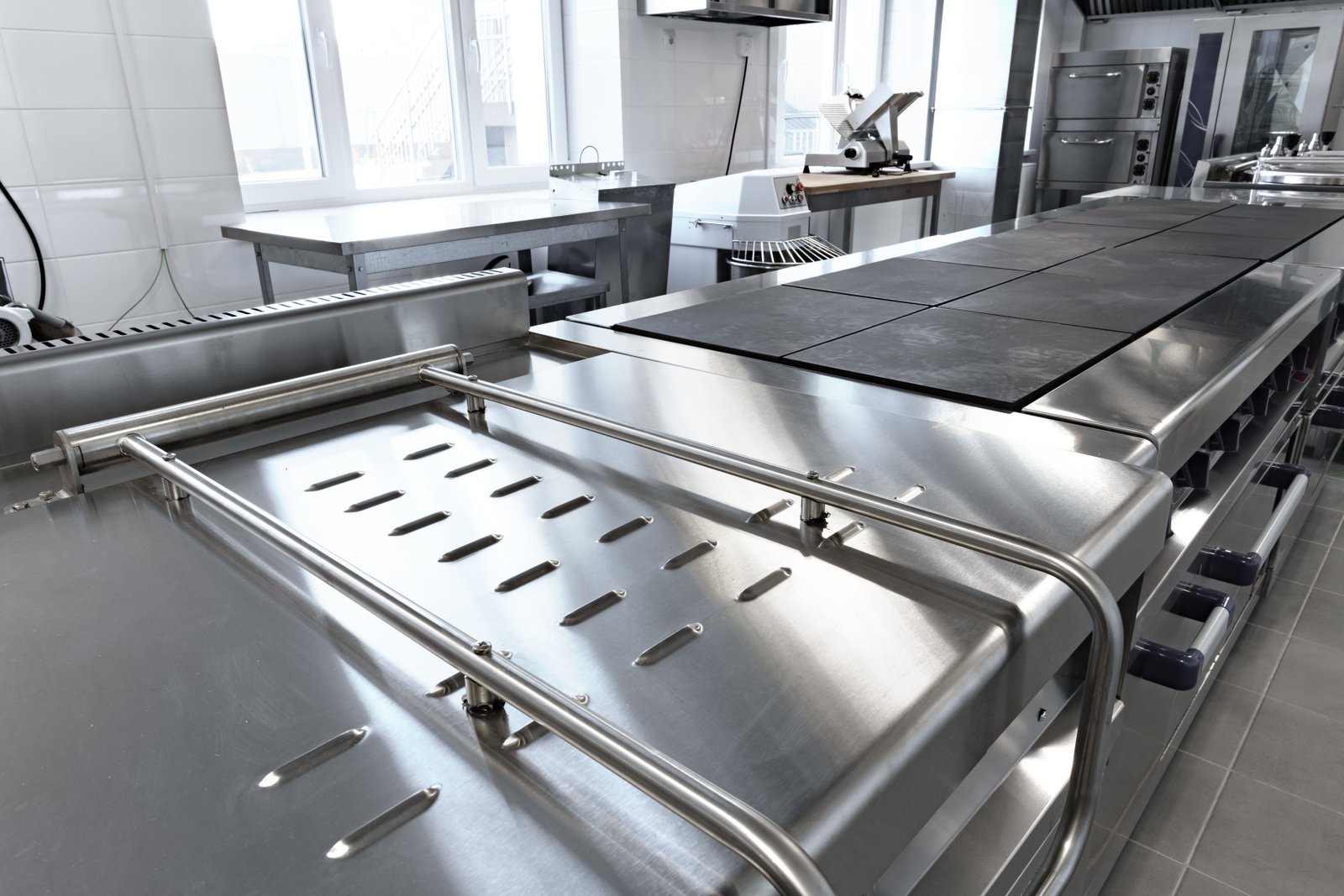
The journey to certification is a marathon, not a sprint. It demands careful planning and sustained effort8. After securing leadership commitment, the next logical step is to deeply understand where your organization currently stands in relation to the standards' requirements. This is where a thorough gap analysis becomes invaluable. It provides a detailed roadmap, highlighting what you already do well and where you need to focus your efforts. This process of self-assessment is incredibly insightful, often revealing inefficiencies or risks you weren't even aware of. By breaking down the process into manageable stages—from planning and documentation to training, implementation, and auditing—any supplier can systematically work towards achieving this critical business milestone. It is an investment that pays dividends in operational excellence and market access for years to come.
Phase 1: Foundational Commitment and Gap Analysis
The journey to certification begins in the boardroom. Without unwavering commitment from top management, any attempt to implement ISO standards is destined to fail. Leadership must not only approve the budget but also champion the cause, communicating its strategic importance throughout the organization. At MFY, our CEO framed the ISO initiative as a cornerstone of our vision to "become the leading international trade and service brand in China’s stainless steel industry." This aligned the certification with our core business goals, motivating everyone from the production floor to the sales team.
Once commitment is secured, the next step is a rigorous gap analysis. This involves comparing your existing processes, procedures, and documentation against every clause of the ISO 9001 and ISO 14001 standards. This can be done internally by a dedicated team or with the help of an external consultant who specializes in ISO implementation. The output should be a detailed report that identifies all non-conformities and areas for improvement. For example, our gap analysis revealed that while we had informal quality checks, we lacked a formalized system for documenting non-conformities and tracking corrective actions, a key requirement of ISO 90019 (Clause 10.2). This specific finding became a priority action item on our implementation plan.
A thorough gap analysis prevents wasted effort. It allows you to focus resources where they are needed most and provides a clear, actionable roadmap for the entire project. It's the diagnostic phase that ensures the subsequent treatment is effective.
Phase 2: System Development and Implementation
With the roadmap from the gap analysis in hand, the development phase begins. This involves writing or refining the necessary documentation for your management system. This typically includes a policy manual, procedures, work instructions, and forms. A common mistake is to create overly complex, bureaucratic documents. The key is to keep it practical and user-friendly. The documentation should reflect what you actually do, not create an idealized, unworkable system. When we developed our environmental procedures for ISO 14001, we worked directly with the plant supervisors to map out our real-world processes for waste segregation and handling, ensuring the procedure was both compliant and practical.
Implementation is where the new system comes to life. This is the most challenging phase and requires extensive training and communication. Every employee needs to understand their role within the new Quality and Environmental Management System (QEMS). We held workshops for different departments, explaining how the new processes would impact their daily work and, more importantly, how it would help them do their jobs better. For example, we trained our sales team on the new contract review process (ISO 9001, Clause 8.2), ensuring they captured all technical and delivery requirements upfront to prevent downstream errors.
This phase is not just about following new rules; it's about fostering a new culture of quality and environmental awareness. It requires patience, persistence, and continuous reinforcement from management to ensure the changes stick.
Phase 3: Internal Audit, Management Review, and Certification
Before inviting an external auditor, you must audit yourself. The internal audit is a critical dress rehearsal. An independent, trained internal team (or an external consultant) reviews your entire management system to verify that it meets the ISO standard and is being followed in practice. This process identifies any remaining gaps or weaknesses, giving you a chance to fix them before the high-stakes certification audit. Our first internal audit identified a few areas where work instructions weren't being followed consistently on the production line. We used this finding to conduct targeted retraining, which was crucial for our success in the final audit.
Following the internal audit, top management must conduct a formal Management Review. This is a meeting where leadership reviews the performance of the entire QEMS, looking at data from internal audits, customer feedback, process performance, and corrective actions. It’s the "Check" step in the PDCA cycle, ensuring the system is effective and identifying opportunities for improvement. This review must be documented, as it's a key piece of evidence for the external auditor.
Finally, you select and schedule the certification audit with an accredited certification body or registrar. This is typically a two-stage process. Stage 1 is a documentation review and readiness check. Stage 2 is the full on-site audit where the auditor observes your processes, interviews employees, and reviews records to confirm compliance. If you've diligently followed the previous steps, this final phase should be a validation of your hard work, not a source of anxiety.
| Strategy Phase | Key Activities | Primary Objective |
|---|---|---|
| Phase 1: Foundation | Secure management commitment; form a project team; conduct a detailed gap analysis. | Create alignment and a clear, actionable roadmap. |
| Phase 2: Development & Implementation | Write/refine documentation; conduct employee training; roll out new processes. | Build a functional and compliant management system that is embedded in daily operations. |
| Phase 3: Verification | Conduct internal audits; hold a formal management review; select a registrar for the external audit. | Verify system effectiveness and achieve formal certification. |
Leadership commitment is crucialПравда
The article emphasizes that securing top management buy-in is the first and most critical step for successful ISO certification.
Gap analysis is optionalЛожь
The text clearly states that a thorough gap analysis is essential for identifying compliance gaps and creating an implementation roadmap.
How do ISO 9001 and 14001 certifications enhance the competitive advantage of suppliers?
Do you feel like you're just another supplier in a crowded market? In the competitive world of stainless steel, simply offering a good product isn't enough. ISO 9001 and 14001 certifications transform your business from a commodity provider into a strategic partner, creating a durable competitive advantage.
ISO 9001 and 14001 certifications enhance competitive advantage by building undeniable brand trust, unlocking access to premium global markets, driving operational efficiencies that can lead to better pricing, and demonstrating a commitment to sustainability that resonates with modern corporate buyers.
This isn't just theory; it's the core of MFY's global strategy. Our certifications are one of the first things we highlight when speaking with a new potential client, whether they are a large construction contractor in Russia or a precision equipment integrator in Southeast Asia. It immediately changes the conversation from being purely about price to being about value and risk mitigation. It tells them that we speak the global language of quality. This builds a level of trust that non-certified competitors simply cannot replicate, allowing us to secure partnerships based on reliability and long-term value, not just a race to the bottom on price. This is the essence of sustainable competitive advantage.
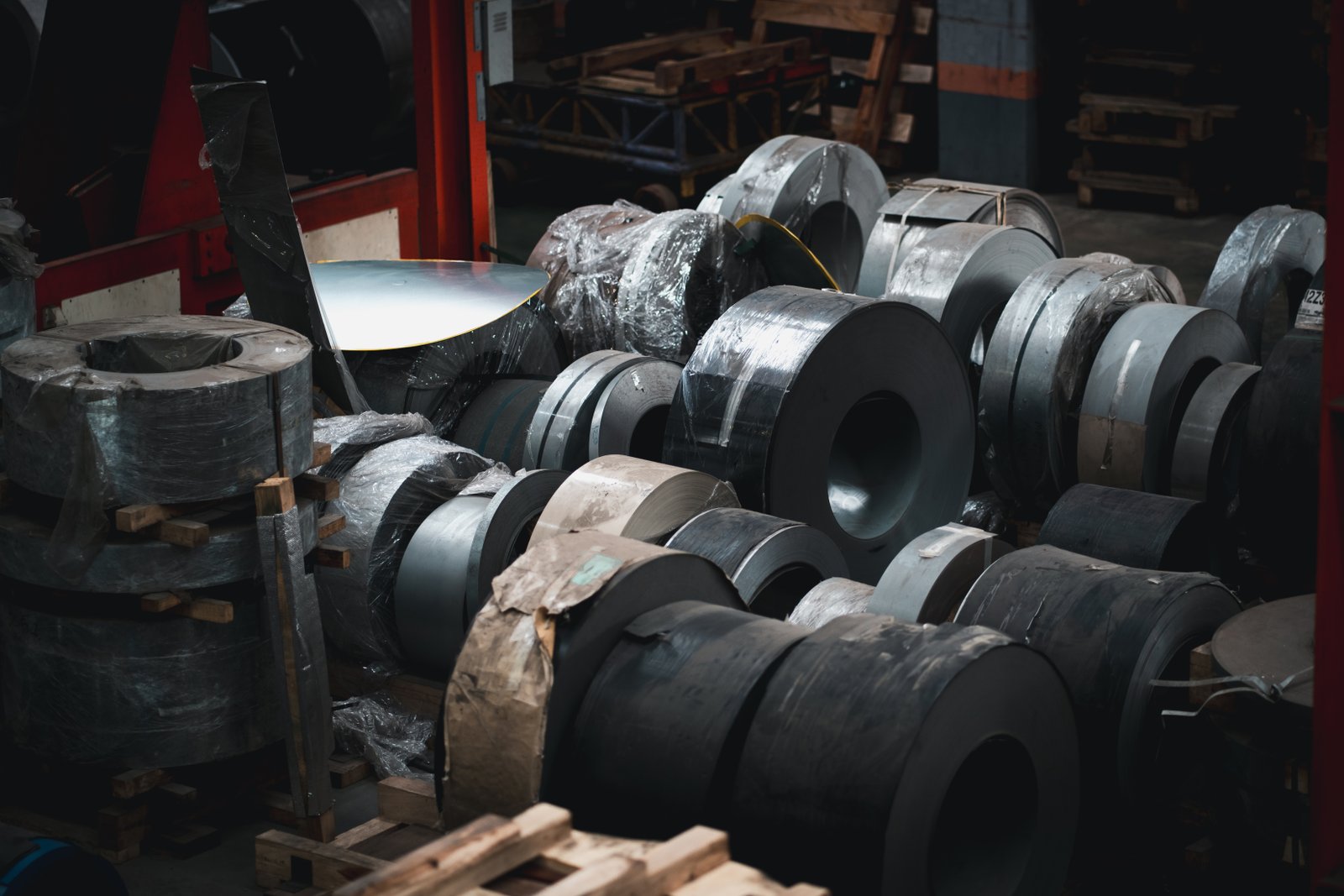
The advantage created by certification is multi-faceted, weaving through every part of the business. Internally, the frameworks of ISO 9001 and 14001 force a discipline of continuous improvement. They turn your operations into a well-oiled machine, systematically reducing waste, minimizing errors, and optimizing resource use. This internal strength then translates directly into external advantages. You can deliver higher quality products more consistently, meet deadlines more reliably, and provide documentation and traceability that your clients depend on for their own quality systems. In an increasingly environmentally conscious world, an ISO 14001 certificate is a powerful statement about your corporate values, aligning your brand with the sustainability goals of your customers and giving you a distinct edge in a market that increasingly rewards responsible business practices.
Building Unbreakable Brand Trust and Reputation
In B2B transactions, reputation is currency. ISO 9001 and 14001 are powerful tools for building a sterling reputation. The third-party verification from an accredited body lends immediate credibility to your claims of quality and environmental stewardship. It's an objective endorsement that you "walk the talk." When we enter a new market, like we did in India, our certifications act as our ambassador, communicating a commitment to excellence before we've even shipped our first coil. This is invaluable for overcoming the initial skepticism that often greets a new supplier.
This trust permeates the entire customer relationship. A client in the food processing industry, for example, has zero tolerance for material defects or contamination. Our ISO 9001 certification assures them that we have rigorous processes for material handling, traceability, and quality control. This trust means they spend less time and money on incoming inspections and can have greater confidence in their own final products. According to an IAQG (International Aerospace Quality Group) study, suppliers with certified quality systems consistently have lower rates of non-conformance. This reliability becomes a core part of your brand identity and a key reason clients choose you and, more importantly, stay with you.
This enhanced reputation also serves as a powerful shield. When issues inevitably arise, having a certified system demonstrates that you have a robust process for corrective action. It shows clients that you are equipped to handle problems systematically and prevent their recurrence, further reinforcing their trust in you as a long-term partner.
Unlocking Access to Lucrative and Stable Markets
As established earlier, one of the most direct competitive advantages is market access. Certification is the key that unlocks the door to the world's most demanding and profitable customers. Many of the largest manufacturing companies, engineering contractors, and government bodies will not even consider a supplier who is not certified. For MFY, our integrated supply chain and strong production capacity would be far less valuable if we couldn't get on the approved vendor lists of these major players. Our ISO certifications are what make us eligible to compete.
This creates a significant competitive moat. While non-certified competitors fight over a limited pool of smaller, price-sensitive customers, certified suppliers can pursue larger, more complex, and more profitable contracts. This provides greater revenue stability and opportunities for growth. For example, our ability to supply stainless steel pipes to a major oil and gas project in the Ближний Восток10 was entirely dependent on our ISO 9001 certification, which guaranteed the material traceability and process control required for such a critical application.
This advantage is self-reinforcing. Winning high-profile projects builds your portfolio and reputation, which in turn helps you win more high-profile projects. The certification acts as a catalyst, creating a virtuous cycle of growth and market leadership that non-certified suppliers find incredibly difficult to break into.
Driving Operational Excellence and Cost Leadership
A common misconception is that ISO certification is just a cost center. In reality, when implemented correctly, it's a powerful driver of operational efficiency that can lead to a sustainable cost advantage. The ISO 9001 framework forces you to map, measure, and improve your key processes. This focus on system efficiency invariably uncovers waste—wasted time, wasted materials, and wasted energy. By eliminating this waste, you lower your cost of production.
At our cold-rolling facility, the implementation of ISO 9001 principles led us to optimize our machine setup times and scheduling, increasing throughput by 8% without any new capital investment. Similarly, our ISO 14001 initiative to monitor and reduce energy consumption cut our electricity bills by 5%, a direct saving that improves our bottom line. These operational gains give us greater pricing flexibility. We can choose to pass savings on to clients to win competitive bids or reinvest them in further innovation, strengthening our competitive position.
The table below summarizes how specific ISO requirements translate into tangible competitive advantages.
| ISO Requirement | Internal Impact | External Competitive Advantage |
|---|---|---|
| Process Approach (ISO 9001) | Streamlined workflows, reduced bottlenecks, and improved efficiency. | Faster lead times, more reliable delivery schedules. |
| Risk-Based Thinking (ISO 9001) | Proactive identification and mitigation of potential failures. | Lower risk for the client, higher product and service reliability. |
| Control of Monitoring & Measuring Resources (ISO 9001) | Ensures accuracy of inspection equipment, leading to consistent quality. | Confidence in material specifications and reduced need for client-side inspection. |
| Environmental Aspects & Impacts (ISO 14001) | Identification of opportunities to reduce resource use (energy, water) and waste. | Lower operational costs, demonstrating commitment to sustainability (a key buyer value). |
| Corrective Action (ISO 9001/14001) | Systematic root cause analysis and prevention of recurring problems. | Demonstrates a commitment to continuous improvement and partnership, building long-term trust. |
This internal optimization is a hidden but powerful competitive weapon. While competitors are battling fires and dealing with inconsistent output, a certified supplier operates with greater predictability and efficiency, creating a cost structure and level of reliability that is difficult to match.
ISO certifications build brand trustПравда
Third-party verification of quality and environmental standards objectively demonstrates reliability to customers.
ISO increases operational costsЛожь
Proper implementation reduces waste and improves efficiency, leading to long-term cost savings.
Заключение
Ultimately, ISO 9001 and 14001 are not just about compliance; they are foundational pillars of a modern, resilient business strategy. For stainless steel suppliers, these certifications are the language of trust, opening doors to global markets and enhancing competitive advantage through proven operational excellence.
-
Discover the benefits of quality and environmental management systems for reliable suppliers ↩
-
Gain insights into how ISO 9001 affects business metrics like sales and growth ↩
-
Understand the global influence of ISO in standardizing industry practices ↩
-
Learn about specific supplier requirements for major projects like desalination plants ↩
-
Discover how ISO certification opens access to better partnerships and growth opportunities. ↩
-
Learn why ISO 9001 enhances client trust and preserves a company’s reputation. ↩
-
Understand the role of ISO certifications in gaining credibility in unfamiliar regions. ↩
-
Discover the role of continuous effort in maintaining and achieving certifications ↩
-
Understand how ISO 9001 handles quality non-conformities and corrective measures ↩
-
Learn why certification is crucial for high-profile engineering projects ↩
У вас есть вопросы или нужна дополнительная информация?
Свяжитесь с нами, чтобы получить индивидуальную помощь и квалифицированный совет.

